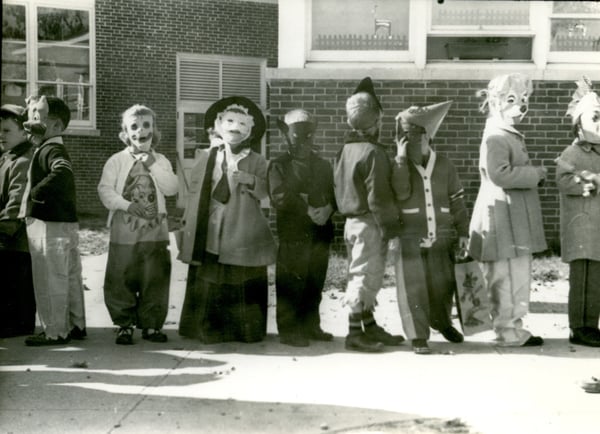


Is it Worth Using Emojis in Marketing? The Arguments For and Against




No matter how much technology advances, the same old problems still rear their ugly heads. You may remember we wrote about the absolute worst marketing blunders of the last six years over Christmas. Amazingly, those mistakes keep appearing, even in 2016; the difference is that the latest gaffes are being conveyed by emojis in a stunning example of misplaced marketing.
We’re still not really sure how we feel about emojis. They’re OK; maybe we’re just fed up with the way they’re currently being used in a marketing sense. It’s not emojis’ fault they’ve been thrust into the limelight this way; they didn’t ask for this life. But thanks to advertisers and publishers trying to relate with broad audiences, we’re bound to see a lot more of them.
There is hope, though. It’s not the emoji you use that counts – it’s what you do with it that really matters when it comes to marketing to your audience.
Facebook ‘Likes’ Get a Facelift
Facebook has finally compromised on years of calls for a dislike button by introducing emoticons including “love,” “haha,” “sad,” “angry” and “wow” alongside the standard like. It’s a personal thing whether you like them or not, we suppose, but we think emoticons are more than likely going to be used in Facebook marketing campaigns soon.
Jonathan Adams, chief digital officer of Maxus Americas, perfectly summed up the possibilities when he said to Fortune magazine: “If I am Hillary, I would be thrilled to target people who can’t stand Trump right now.”
There are no official plans as of yet from Facebook, with emoji usage only being attributed as an additional like on a post. But if and when it is introduced, advertisers had best use the technology properly, because recent weeks have seen House of Fraser make headlines for its dreadful use of emojis.
I Get So Emojinal, Baby
House of Fraser’s recent ‘emojinal’ campaign over Valentine’s Day hit the headlines for all the wrong reasons, with some wondering whether the company’s social accounts had been hacked. We wish they had been, but someone on the company payroll had actually dreamt it up: terrible pop-culture images of Harry Styles and Kanye West filled House of Fraser’s Twitter feed and left its audience scratching their heads.
Mainly because no-one knew what was happening. Some called out the company for being disrespectful and rude, and House of Fraser’s replies appeared to accuse critics of being boring.
Apparently it was all a game so people could win a discount, and was created because research showed House of Fraser that 72 per cent of 18-25-year-olds prefer using emojis to speaking about their feelings. So what better way to communicate that by acting like your cat’s walking all over your keyboard while logged into Twitter?
It’s one of the most basic rules of marketing; you need to get the message across as quickly and concisely as possible to attract people’s attention. Another basic rule is not to act like a teenager having a public meltdown. The phrase: "you're tacky and I hate you" springs to mind.
As poor as the campaign was, at least House of Fraser can partly justify the method and the madness, and have tried something new. However, the brand could take a leaf from Proctor & Gamble, whose recent emoji campaign for its Always brand is miles better.

A Gamble Paid Off
The #LikeAGirl campaign sets out to highlight how behind the times some emoji sets are, with female characters usually depicted as princesses or brides.
It’s a very interesting angle for Proctor & Gamble to take, and has a forward-thinking message that will no doubt resonate with Always’ target market. Survey results released by the brand say that, of over 1,000 women in the UK aged 16 to 24 years old, nearly half believe female emojis are “stereotypical”, while 70 per cent feel they show women only have clichéd interests like getting their hair cut or shopping. It’s hard to argue with this, especially while male emojis show men arresting criminals, putting out fires, and scoring winning goals.
Proctor & Gamble believe the campaign is becoming a “movement” and It’s certainly the polar opposite of the House of Fraser campaign. Instead of being cool by posting loads of emojis, the brand is instead starting a conversation to battle age-old stereotypes.
Even though the Always campaign makes clever use of emojis, it also underlines the problems associated with them. Emojis, in the main, don’t really say anything of creative value, and need a very strong strategy behind them if an advertising campaign with them is to work. McDonald’s, one of the biggest brands around, can’t stop using them in their campaigns, despite accusations that they’re “terrifying”.

The Young Ones
There’s another side to the story, and it relates to millennial marketing. The Drum recently asked whether we’ve reached ‘peak millennial’, with brands doing everything they can to try and show the age-set they’re cool by using things like emojis in their campaigns. Millennials though – if those brands took the time to listen – hate being marketed to in this way, with many in this target market saying such ads are “unprofessional”.
Take EE and O2. They’re perfect examples of why all millennials don’t see emojis as the best thing since sliced bread. Some carriers are now charging approximately 40p to send them as an MMS, making emojis an expensive business when you’re not connected to WiFi.
The emoji problem is interesting because it’s a specifically targeted millennial issue. You’d be stretched to find emojis being used to sell life insurance or stair lifts, for instance. As AdWeek points out, emojis appear to be used because so many brands don’t know how to approach or connect with a millennial audience. Brands are intimidated by them, Adweek says.
The internet suggests they’re not wrong, with scores of brands looking ridiculous by trying to connect with ‘yoof culture’. The emoji is the latest evolution in that, and the sooner brands treat younger audiences and millennials like real human beings, the better.
Find out more about using social media in the right ways to connect better with your audience by contacting the inbound marketing specialists at Six & Flow today.









